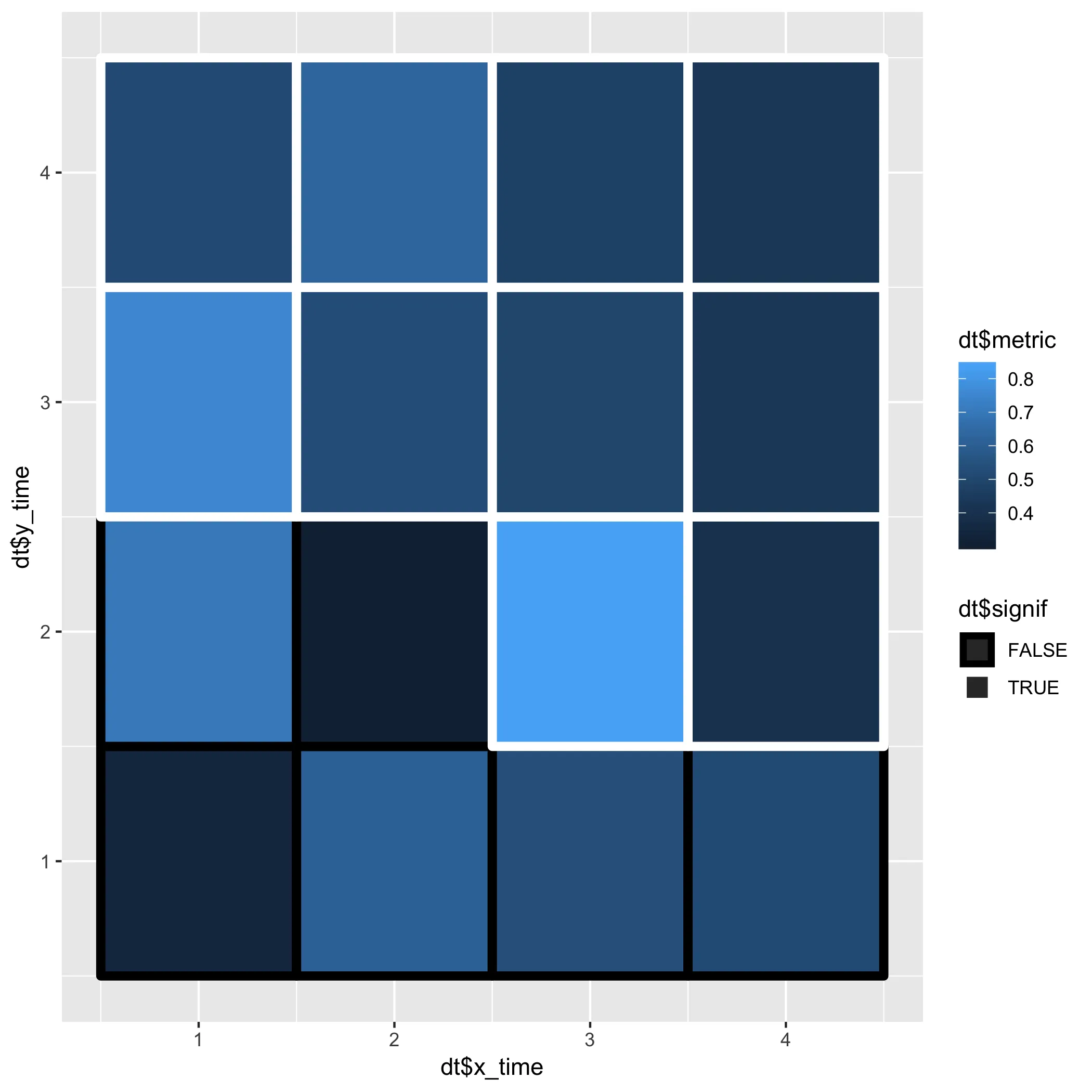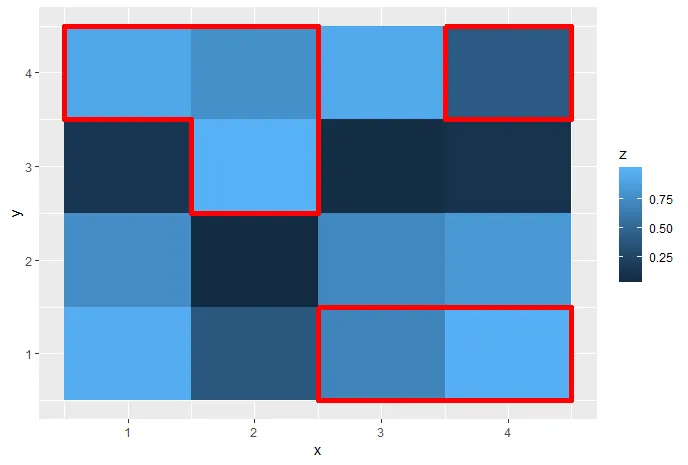我有一组数据,其中包含两个时间轴和每个单元的测量值。基于此,我创建了一个热图。我也知道每个单元格的测量值是否显著。
我的问题是在所有显著单元格周围绘制等高线。如果单元格形成具有相同显著性值的聚类,则需要在聚类周围绘制等高线,而不是在每个单独单元格周围绘制。
数据格式如下:
x_time y_time metric signif
1 1 1 0.3422285 FALSE
2 2 1 0.6114085 FALSE
3 3 1 0.5381621 FALSE
4 4 1 0.5175120 FALSE
5 1 2 0.6997991 FALSE
6 2 2 0.3054885 FALSE
7 3 2 0.8353888 TRUE
8 4 2 0.3991566 TRUE
9 1 3 0.7522728 TRUE
10 2 3 0.5311418 TRUE
11 3 3 0.4972816 TRUE
12 4 3 0.4330033 TRUE
13 1 4 0.5157972 TRUE
14 2 4 0.6324151 TRUE
15 3 4 0.4734126 TRUE
16 4 4 0.4315119 TRUE
以下代码生成以下数据,其中度量是随机的(dt$metrics),重要性是逻辑的(dt$signif)。
# data example
dt <- data.frame(x_time=rep(seq(1, 4), 4),
y_time=rep(seq(1, 4), each=4),
metric=(rnorm(16, 0.5, 0.2)),
signif=c(rep(FALSE, 6), rep(TRUE, 10)))
仅使用ggplot2的geom_tile命令就可以生成热力图。
# Generate heatmap using ggplot2's geom_tile
library(ggplot2)
p <- ggplot(data = dt, aes(x = x_time, y = y_time))
p <- p + geom_tile(aes(fill = metric))
根据这个问题,我成功地绘制了每个单元格周围具有不同颜色的等高线,根据其显著性值进行区分。
# Heatmap with lines around each significant cell
p <- ggplot(data = dt, aes(x = x_time, y = y_time))
p <- p + geom_tile(aes(fill = metric, color = signif), size = 2)
p <- p + scale_color_manual(values = c("black", "white"))

然而,这种方法不能通过在整个组周围绘制轮廓来将相邻的显著细胞聚集在一起(正如我链接到的问题中所讨论的那样)。
正如这个问题所展示的那样,可以在指定区域周围绘制框,但我认为这不可能扩展到所有可能的细胞团簇。


raster::clump相当简单。例如,请参阅 如何在 R-raster 中获取网格周围的等高线?。 - Henrik